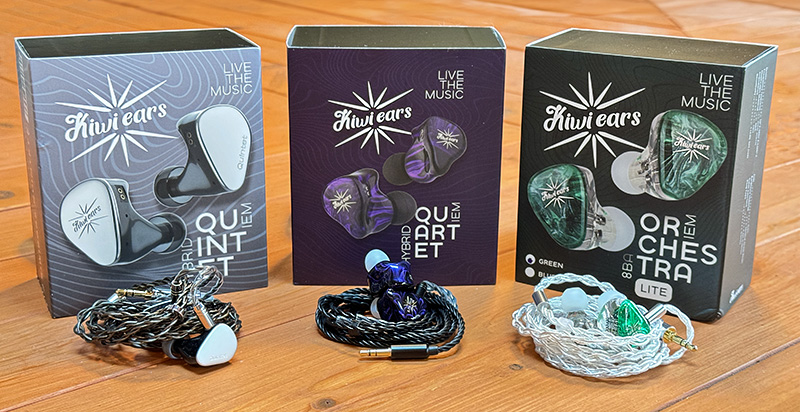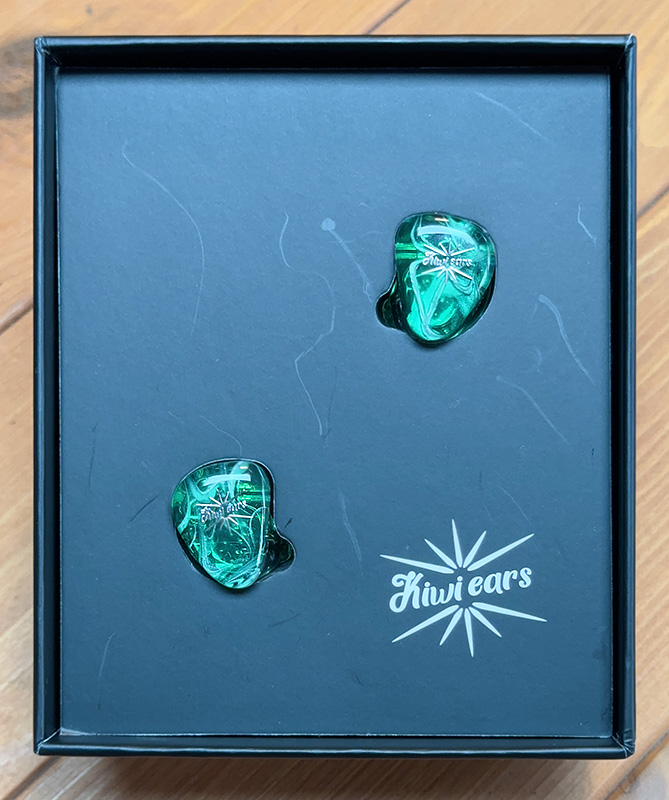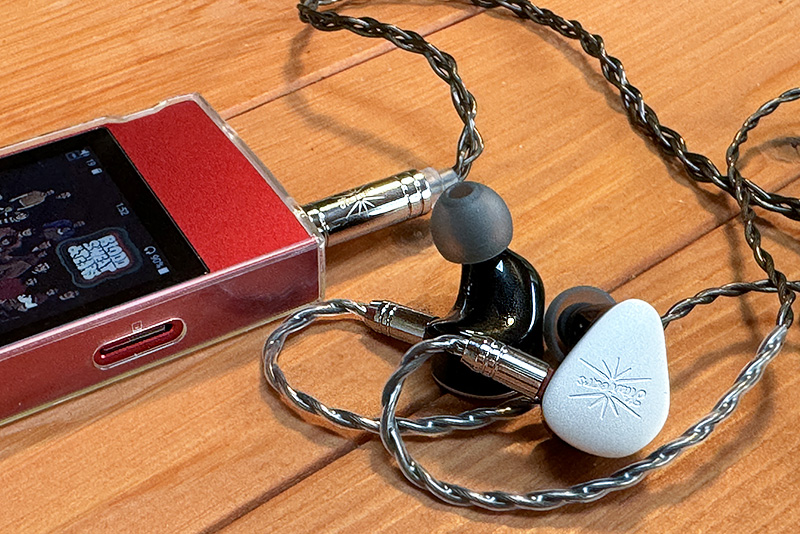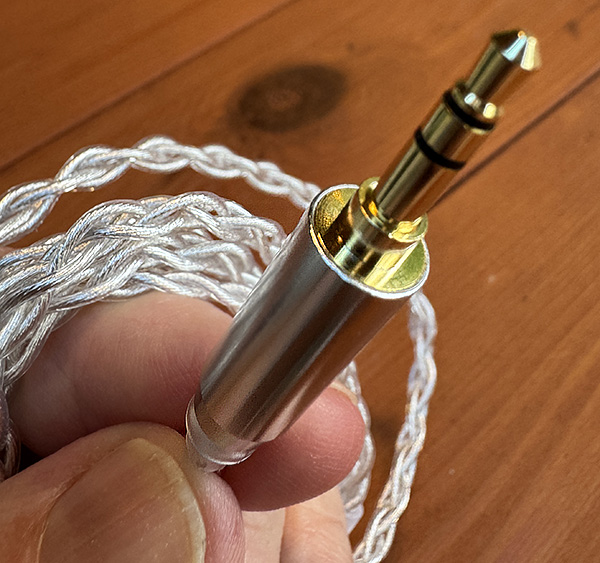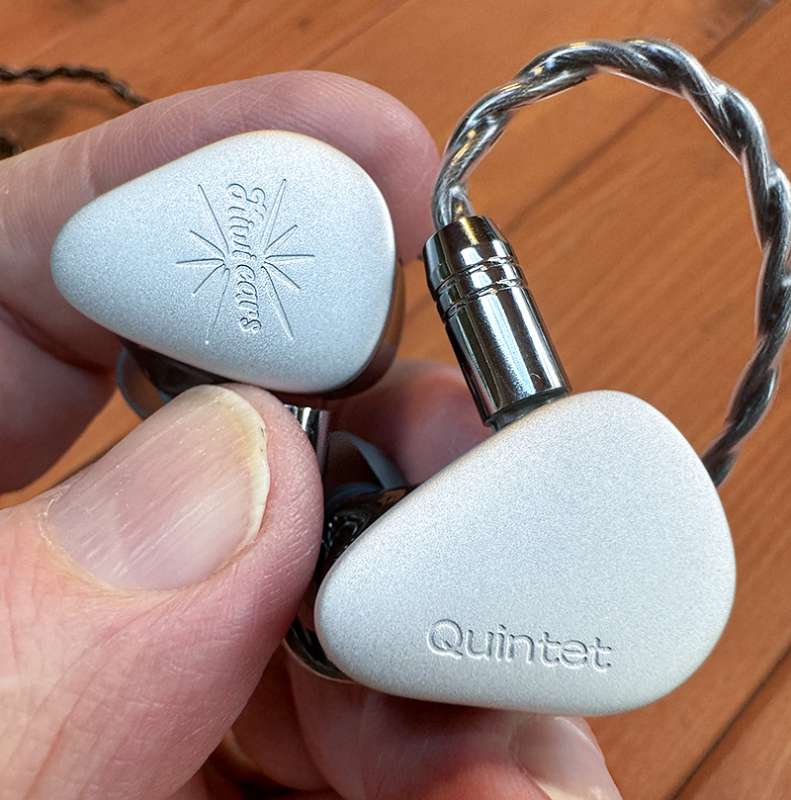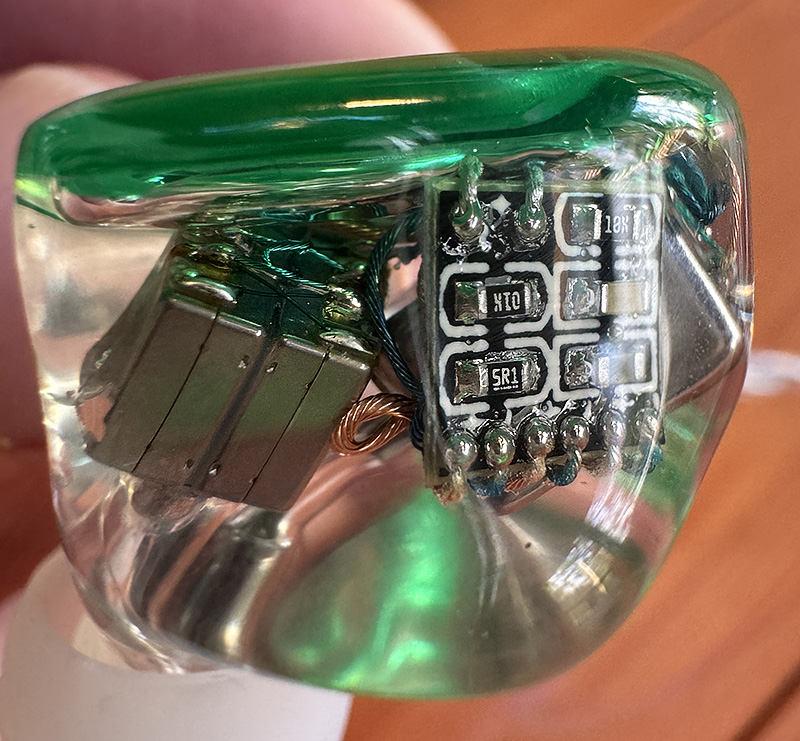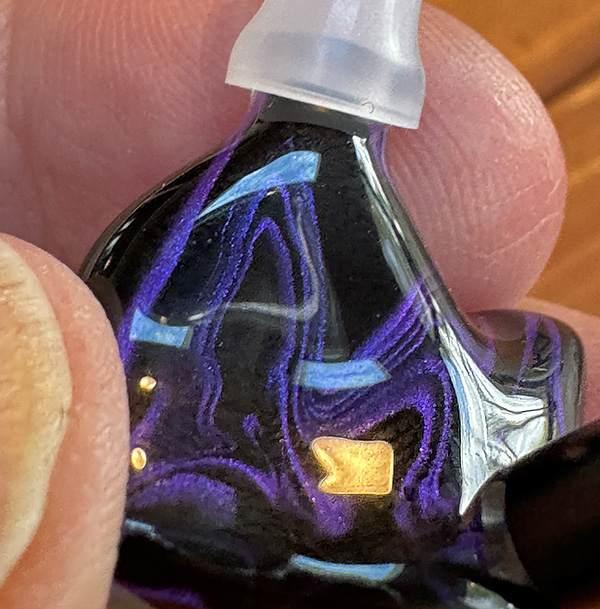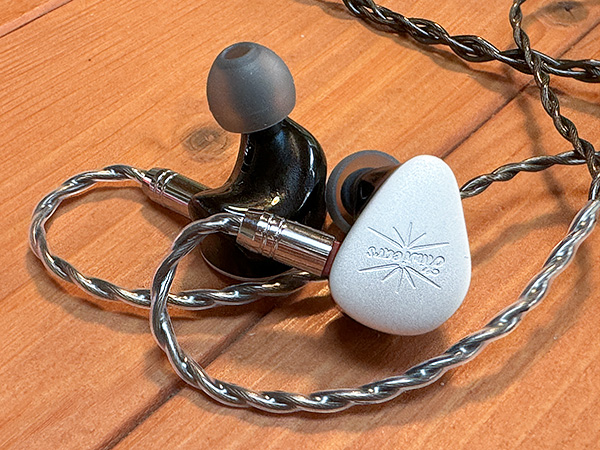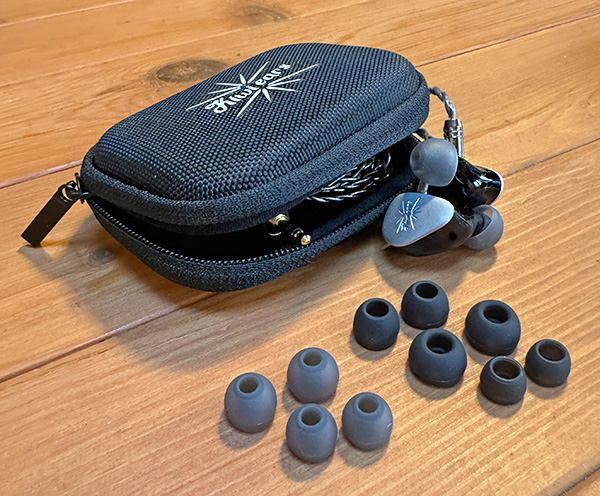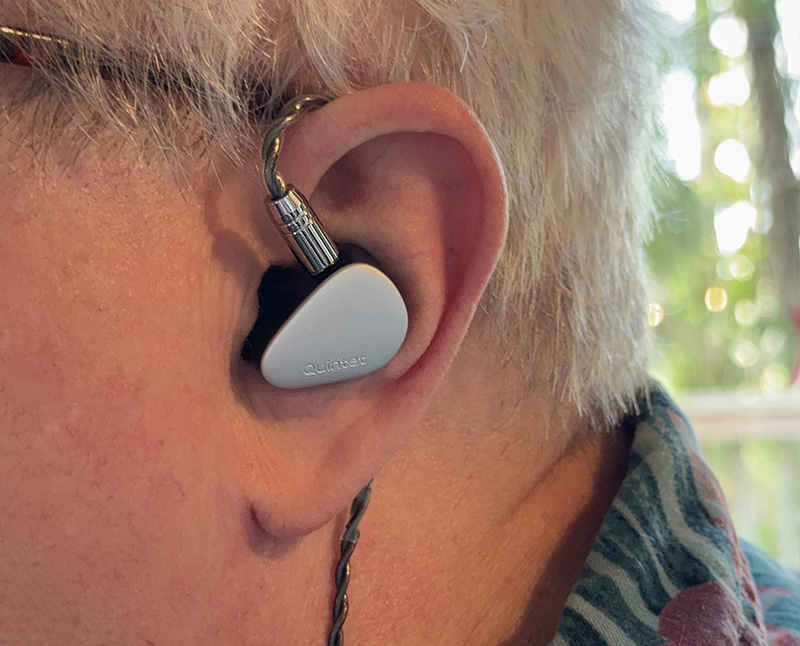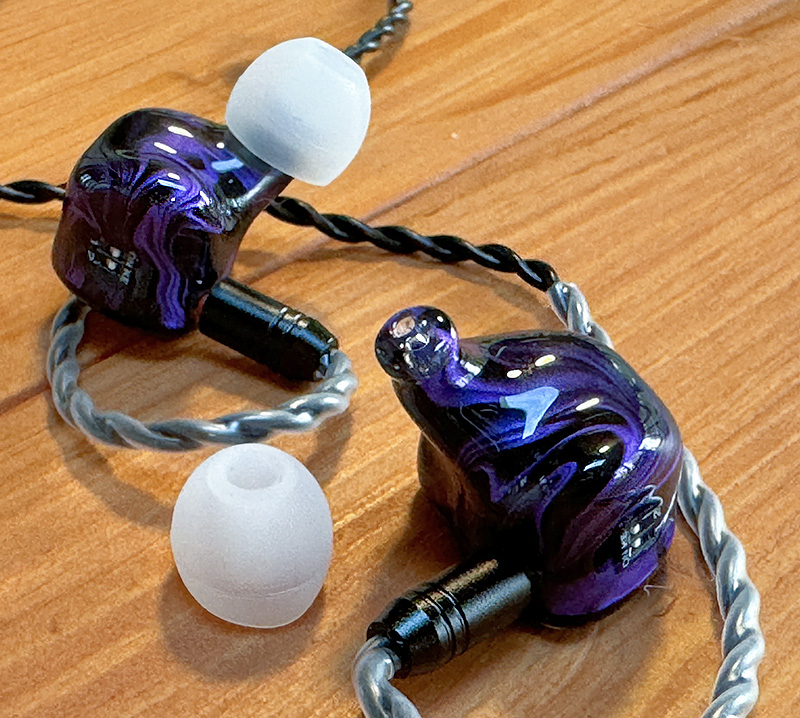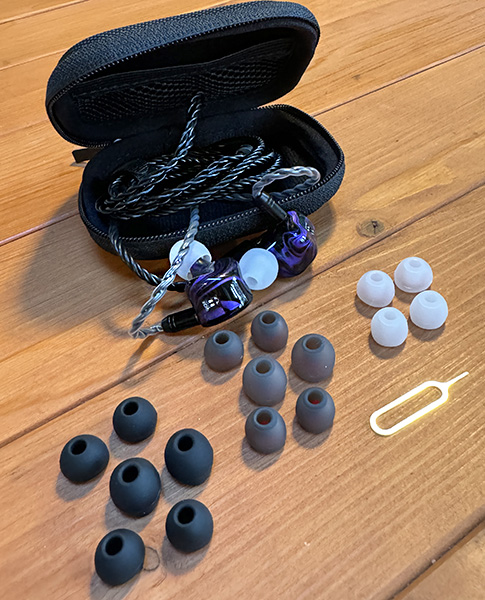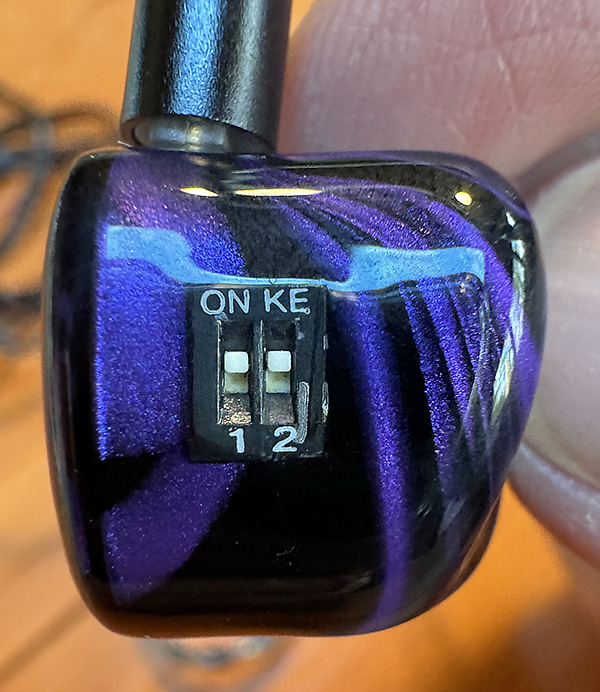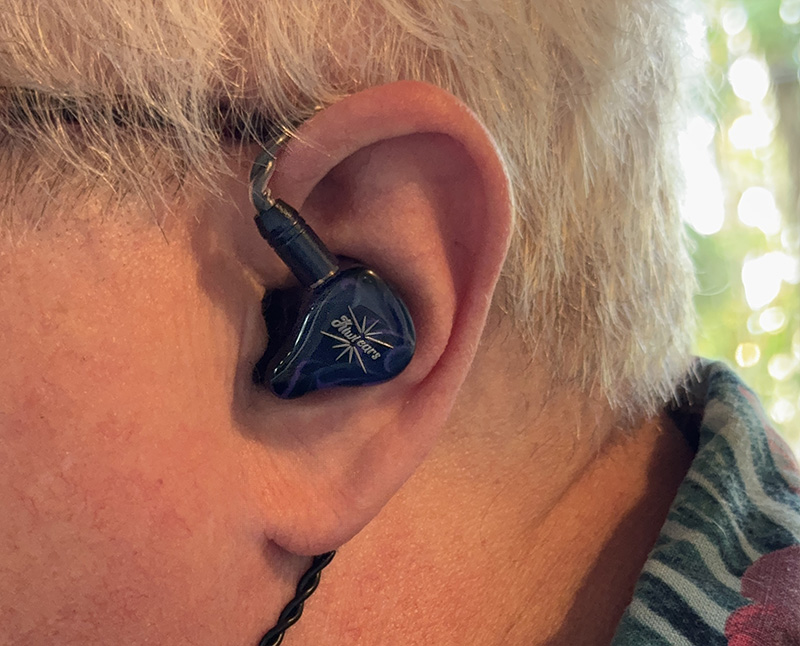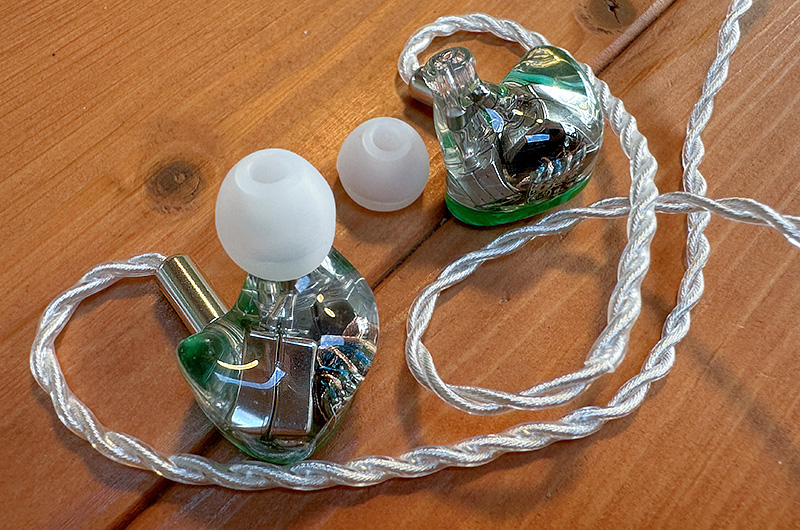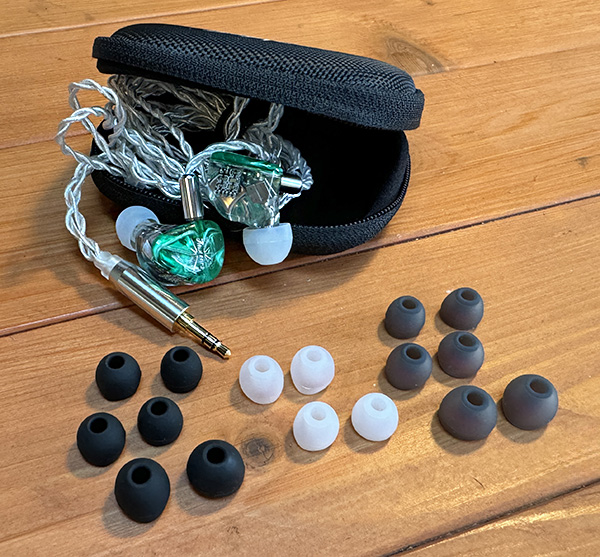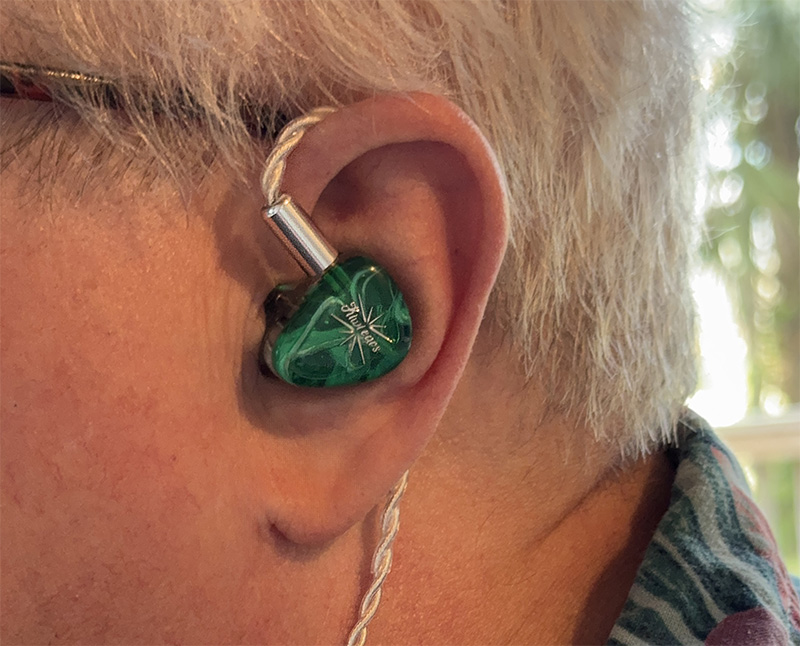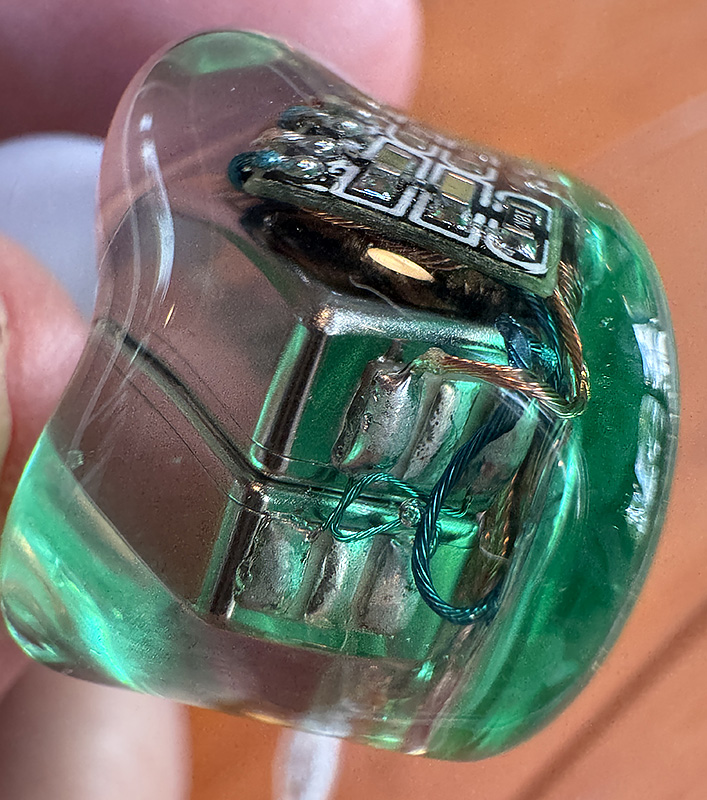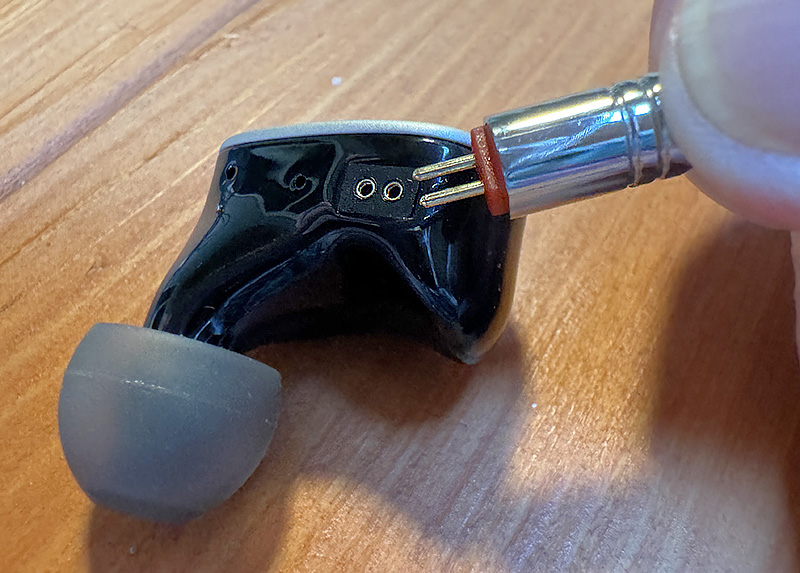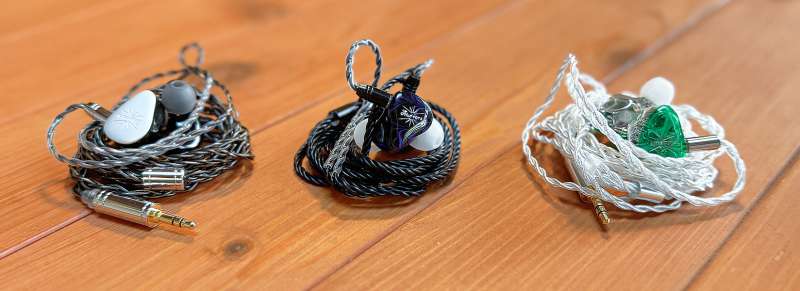REVIEW – For some reason lately, I’ve been receiving (more than usual) audio speakers and headphones/earphones to review. I love it. Audio is my first love and playing with new gear is always fun. I’ve been having triple-fun—so to speak—with some Linsoul Audio Kiwi Ears in-ear monitors (IEMs). They wanted me to review the hybrid Quintet, Quartet, and Orchestra Lite IEMs. So, let the fun begin!
What is it?
The Linsoul Audio Kiwi IEMs are wired (none of the Kiwi Ears IEMs are wireless) that wrap around behind the ear for a secure and (almost) silent listening experience. Think of how musicians look on stage with their ears plugged by earphones and you get the idea.
An IEM is usually a bit different than an earphone bought for music listening. While music with IEMs can sound great, they are mostly used as stage monitors for live music. I don’t play an instrument, so this review will stick with listening to pre-recorded music on both my (new) iPhone 15 Pro and the Fiio M7 portable music player.
Until fairly recently, the privilege of experiencing these kinds of IEMs was custom-only models that cost many hundreds (and even thousands) of dollars. That has drastically changed. You can now find multi-speaker IEMs that sound great from less than $100 to $500 max. This is where Kiwi Ears comes in. They offer many models in many price ranges—none approaching the astronomical range of earlier versions.
Linsole Audio Kiwi Ears are wired only—there’s no getting around that. If convenience is your goal, look elsewhere. If however, you are a performer on a budget, Kiwi Ears IEMs can be a great choice for stage monitors. They are not custom-made but are plenty comfortable for stage work.
Kiwi offers many types of IEM speaker configurations. Of the three I was sent, The Quintet is a hybrid (more like an uber-hybrid) setup with a single dynamic driver, 2 balanced armature (BA) drivers, 1 planar magnetic driver, and 1 piezoelectric (PZT) bone conductor—for a total of 5 speakers per ear.
The Quartet features 2 dynamic drivers and 2 balanced armatures. The dynamic drivers are tuned to act like sub-woofers.
Lastly, the Orchestra Lite is a successor (sort of) to the more expensive Orchestra IEM. The Lite version features 8 armature speakers per ear: 2 are tuned for sub-bass, 4 tuned for mids, and 2 tuned for higher frequencies. Kiwi Ears states that the Orchestra Lite IEMs are made for a more balanced and natural tonal signature, making this model more suited to stage work.
Note: Here is an (oversimplified) explanation of the various IEM speaker types:
-
- Dynamic driver: This speaker looks and acts like a tiny version of a traditional speaker. They generally have more bass.
- Balanced armature: This driver comes from the hearing aid industry. They look visually nothing like a speaker. Armatures are generally for mid to higher frequencies.
- Planar magnetic: Planar Magnetic drivers are similar to dynamic drivers but have an ultra-thin diaphragm. This driver has good bass response, coupled with higher frequencies. Distortion levels with planar magnetic drivers are usually low.
- Piezoelectric (PZT) bone conductor: This is an unusual driver for a hybrid. It’s made to work in conjunction with the planar magnetic driver for a more accurate treble response.
The IEMs come with oxygen-free cables—something usually found on more expensive iEMs.
Specs
- Many speaker types (see above)
- Oxygen-free cables
- 2-pin connectors
- Medical-grade resin shells
- Different-sized ear tips
- Carrying case
Design and features
As I hold any of Linsoul Audio Kiwi Ears IEMs, I’m struck by the quality of their construction. While the prices between the three vary a bit, the build feels the same across the board.
Here are my impressions of each in no particular order:
Quintet ($219): This 5-speaker IEM takes a kitchen sink approach with 4 different types of speakers. I’m not sure if the advantages of such a setup can be truly appreciated without direct comparisons to other Kiwi Ears models. If I bought this pair only, what would my impression be? Well, I kinda like them. I’m sure Kiwi Ears’ goal was for the Quintet to achieve a full-range sound with their multi-speaker array in each ear. While they mostly succeed, the audio is a bit too bright for my tastes. Note that I am sensitive to higher frequencies, so what I perceive as bright, others may love. But that’s true of any audio review. In the end, you can only trust your ears—no one else’s.
I played and compared some songs from both the Fiio M7 music player and the new iPhone 15 Pro Max (using Apple’s USB-C to headphone jack—iPhones don’t have headphone jacks anymore). While the sound on the M7 usually sounded a bit richer, the results were surprisingly close. Apple has come a long way in audio quality and their headphone jack adapter works quite well. Bass response was good, but the sub-bass was a bit lacking using both players.
However, that may not be a bad thing. The Kiwi Ears are more accurate than friendly to listen to. What do I mean? Many headphone/earphone users say they want accuracy, but the truth is that most listeners prefer a more “warm” sound—meaning a slightly boosted bass. Kiwi Ear’s accuracy is tuned more for on-stage and recording work, where accuracy means everything. It’s here where Kiwi Ears shines.
The Quintet IEMs are the more boring-looking of the 3 IEMs in this review. Their silver-colored faceplate is not as exciting as the transparent teal and purple colors of the others.
Quartet ($109): These are the bargain version, but I actually prefer the sound of these when compared to the Quintet IEMs. Maybe it’s because the dual dynamic drivers coupled with dual armature speakers exhibit more pleasing bass to my ears. Whatever. I can easily listen to these for longer periods than the more expensive Quintet. I will say that the Quintet IEMs sound more accurate which could explain the cost difference. I imagine a musician would choose the Quintet over this Quartet IEM every time.
The Quartet comes with 2 tiny switches on each earpiece that have (unexplained by Kiwi Ears) markings (ON-KE & 1 – 2) that can help tune the sound. These switches allow for 4 possible tuning styles. Since I liked this setting unchanged from the factory, I left it alone.
The bottom line is if you want to listen to your favorite music, save some bucks and go with the Quartet IEMs.
Orchestra Lite ($249): As a replacement or substitute for the much more expensive Orchestra IEM ($499), Kiwi Ears state that the Lite version is “. . . built on the same foundation as the original Orchestra, yet redesigned to be more efficient, both in performance and cost.” At half the cost of the Orchestra IEM, they certainly created an IEM that should make you think twice before paying double for the original. Both the Orchestra and Orchestra Lite IEMs have 8 balanced armatures per ear. That’s 16 speakers, folks. Although I don’t have the original Orchestra IEMs to compare, I can’t imagine them sounding twice as good as the newer Lite version.
When listening to the same music on the other IEMs, I could immediately tell that the Orchestra Lite IEMs are meant for pros on stage and in the studio. The soundstage—that spacious 3D quality in music—is wonderful.
These are serious in-ear monitors—not earphones for casual listening. I’m not a pro musician, but my son and wife are both performers, so I imagine either one will be using these while on stage once I am done with them.
Note that once again, my ears prefer the least expensive of the three IEMs reviewed—probably because I have different requirements than any audio performer would have.
What I like
- All are equally well-made
- Any of the 3 looks more expensive than they are.
- Many accessories are available
- Oxygen-free cables
- Cables are better than many supplied on other IEMs
What I’d change
- The 2-pin cable interface feels fragile
- I wish Kiwi Ears offered wireless versions
Final Thoughts
I realize that Linsoul Audio Kiwi Ears mainly markets their IEMs for performing pros, but it’s clear to me that listeners like me can also appreciate these IEMs. However, that casual listener in me prefers the friendlier, smoother sound of the “less accurate” Quartet model. Add to that any money saved and the Quartet IEM is a total winner in my ears. We can always hope that wireless versions are in the future.
Price: Quintet ($219); Quartet ($109); Orchestra Lite ($249)
Where to buy: Kiwi Ears and Amazon
Source: The sample of this product was provided by Linsoul Audio.

